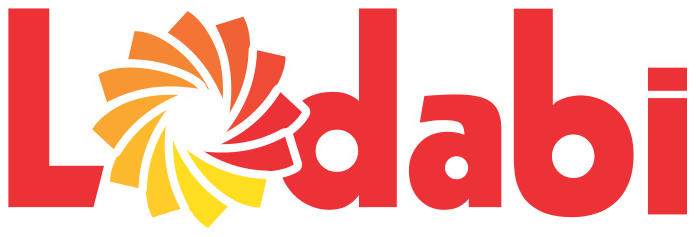Tổng phụ: ₫109.000
Software development
What Does a Solutions Architect Do? Roles and Responsibilities
An IT solution architect guides your processes when your target is enterprise solutions or to make your existing product grow. Various programming languages, libraries, frameworks, architectural patterns, databases, and standards are there. The solution architect accounts for choosing tools that best suit the specific project, and this demands tech proficiency to compare and access tools. The tech architect approach directly relies on the solution architect’s technology stack. Furthermore, a solution architect starts too soon in the project with a plan to achieve.

A solution architect is a specialized role providing the groundwork for software development projects by tailoring IT solutions to specific business needs. The role consists of many subprocesses that draw from various other IT viewpoints. To put it simply, Technical Architects provide leadership and guidance to IT development teams. Technical Architects are in charge of a specific engineering, software architecture or implementation technology.
The Small Town Metaphor for Enterprise Architecture: Guiding Ecosystem Strategy Design
As a rule, this person has industry-specific expertise, so he or she understands what stakeholders want and why they want it. A solution architect role also presupposes strong technical skills that help him or her communicate a product vision to a development team. One of the most sought-after roles in software development companies is as a solution architect. The solution architect works with the development team to create and integrate information and computing systems that meet specific needs. In other words, architect duties are connected with integrating software and hardware. The solution architecture was designed considering all the business requirements.
- In addition, the processes became digitized and transparent, with improved usability for all parties.
- An enterprise architect
This specialist evaluates the technology ecosystem in its entirety and makes certain that the resulting program will seamlessly blend into the picture. - An understanding of IT systems and domain knowledge with strong analytical skills.
- Most of the certification platforms, besides the exam itself, offer training courses, learning materials, and practice tests.
- It’s a solution architect’s responsibility to ensure that the login process goes as fast and seamless and possible.
Depending on the solution architect’s technical skills and area of expertise, there are several types of professionals, e.g. those who deal with networks, security, data, DevOps flows, or infrastructure. A lead architect is a role that leads and manages a team of architects, either within a project, a program, or a portfolio. A lead architect defines the architecture vision and strategy for the team, as well as the architecture governance and processes. A lead architect also mentors and coaches the team members, and monitors and reports on the architecture performance and quality. A lead architect needs to have a high level of leadership and management skills, as well as the ability to influence and negotiate with senior stakeholders and sponsors.
What is the Role of a Solutions Architect?
Solution architecture is concerned with defining and designing the building blocks for a program and a very high level. It is about understanding the current state, its impact on the overall architecture, and defining new blocks and their interfaces. The initial high-level design will need to be monitored to confirm that it is consistent and compared with the solution’s overall design. The solution architect works directly on the project while the business analyst develops the requirements. These specialists are responsible for the project vision that underlies the solution and translates that vision into reality.
This will enable software engineers to produce the solution as defined, reviewed, and approved by the solution architect. Many SAs will have the tools to move into corporate or business planning, other senior IT positions, different architecture roles, or even a CTO. Even the most sophisticated software product is worth investing solution architect roles and responsibilities in only if it can bring real business value. A software architect is a person who ensures that you spend money on tech solutions wisely instead of taking a shot in the dark. Specifically, they are responsible for bridging the gap between a company’s business strategy and the technical solutions it purchases or builds.
Project and resource management skills
Preparing for RPA means setting up best practices, which might vary depending on organizations. In this case, pushing the automation script to live is easy, but now its execution becomes dependent on the client using it. Everything you need for quick time-to-value and long-term success through EA. Uncover the value of a successful EA practice, and how that translates to your organization.

Gary T., Director of DevSecOps, shares advice for technologists and the importance of integrating security practices within the traditional DevOps process. Compared to our professional services fee, the price of our products is a fraction of what we charge for custom work. Once a solution goes live, it matures https://www.globalcloudteam.com/ and undergoes various usage milestones. To support the evolving uses of the system, the SA’s should define and communicate changes to existing NFRs and define new NFRs. This ensures that the architectural work does not stop after the initial version of the solution has been developed and released.
Content & Trademarks
We offer a wide range of services starting from software, mobile, and web app development to outstaffing and IT consulting services. Intellectsoft has extensive experience across various industries such as healthcare, logistics, construction, fintech, and others. As the job title implies, a solutions architect primarily focuses on solution-level decisions and evaluation of their impact on a client’s overarching business objectives and outcomes. Ultimately, you will work with the organization’s leaders to identify problems and then work with our IT Team to address those problems with innovative software solutions.
Certifications are intended to validate the skills and expertise of solution architects. So, having one or more credentials proves the expert’s proficiency in specific skills. After developing a strategic technical vision of the product, the solution architect is involved in estimating the budget and presenting it to the stakeholders. Once everything is agreed upon, he or she monitors the process of development and keeps stakeholders informed about the progress.
Creating Technical Documentation and Architectural Diagrams
Solution architecture describes how different components of business, information, and technology architectures are used in a particular solution. As solution architecture is more focused on details and solution technologies to address a specific business problem, it provides a channel between enterprise architecture and technical architecture. An effective approach for companies is combining enterprise architecture activities with solution and technical architecture activities.

First of all, let’s define the notions of solution architecture and solution architect. Solution Architects are individuals who can deal with complex environments while delivering value. Over the past couple of years, the demand for solution architects has grown dramatically due to the ability to solve a wide range of problems in companies.
Solution Architect Skills
It also involves debugging and creating performance analysis on implemented solutions. The solution architect must be able to describe the solution in a language understandable to all. After that, the experts must pass through recertification to confirm their continued expertise and knowledge of the modern AWS technologies and innovative practices. These experts have recently been popular as CI/CD (continuous integration and continuous deployment) gets increasingly integrated into the business.

 TÚI ĐỰNG ĐỒ LÓT 2 MẶT THÔNG MINH
TÚI ĐỰNG ĐỒ LÓT 2 MẶT THÔNG MINH